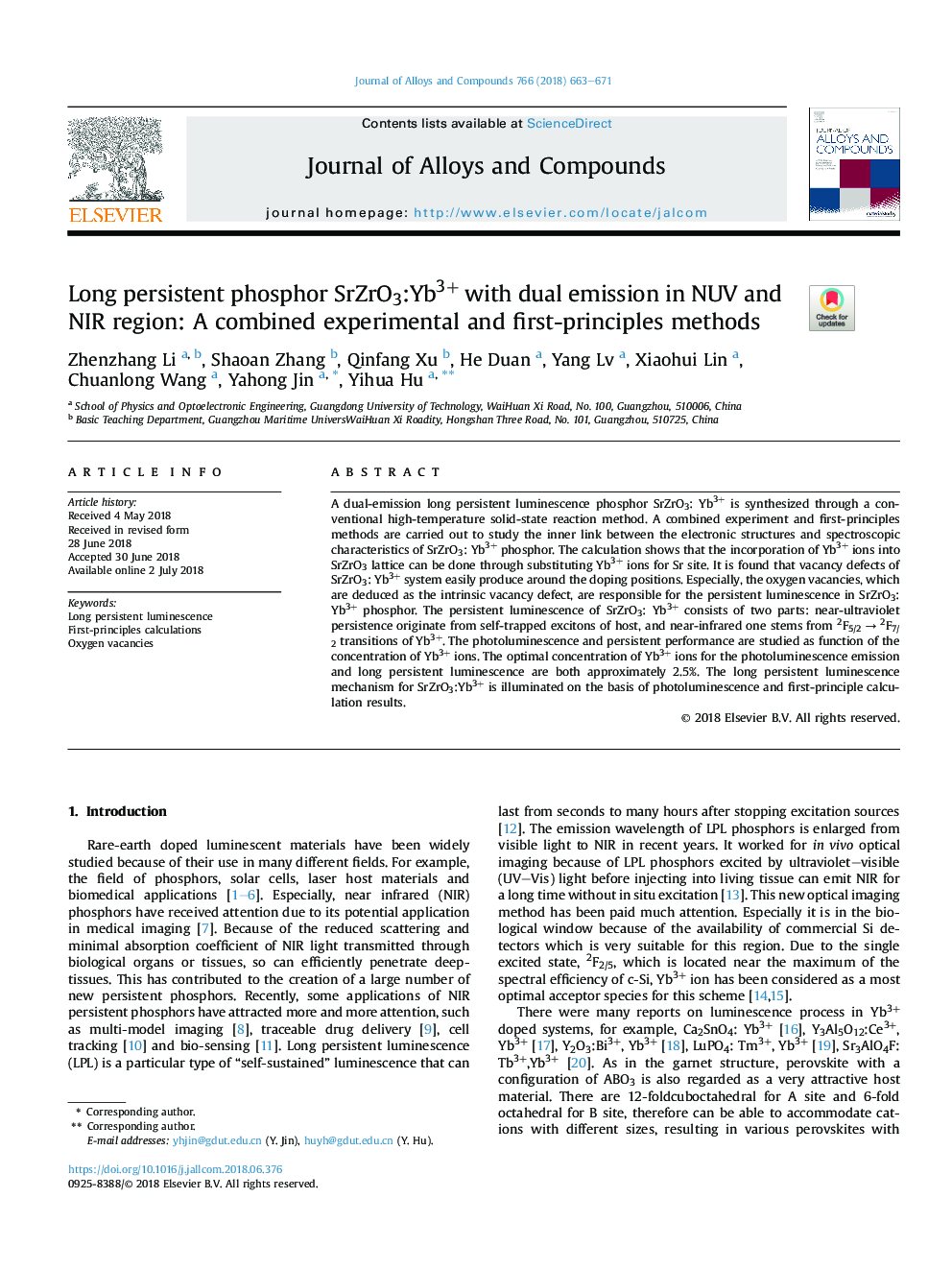| Article ID | Journal | Published Year | Pages | File Type |
|---|---|---|---|---|
| 7990434 | Journal of Alloys and Compounds | 2018 | 9 Pages |
Abstract
A dual-emission long persistent luminescence phosphor SrZrO3: Yb3+ is synthesized through a conventional high-temperature solid-state reaction method. A combined experiment and first-principles methods are carried out to study the inner link between the electronic structures and spectroscopic characteristics of SrZrO3: Yb3+ phosphor. The calculation shows that the incorporation of Yb3+ ions into SrZrO3 lattice can be done through substituting Yb3+ ions for Sr site. It is found that vacancy defects of SrZrO3: Yb3+ system easily produce around the doping positions. Especially, the oxygen vacancies, which are deduced as the intrinsic vacancy defect, are responsible for the persistent luminescence in SrZrO3: Yb3+ phosphor. The persistent luminescence of SrZrO3: Yb3+ consists of two parts: near-ultraviolet persistence originate from self-trapped excitons of host, and near-infrared one stems from 2F5/2â¯ââ¯2F7/2 transitions of Yb3+. The photoluminescence and persistent performance are studied as function of the concentration of Yb3+ ions. The optimal concentration of Yb3+ ions for the photoluminescence emission and long persistent luminescence are both approximately 2.5%. The long persistent luminescence mechanism for SrZrO3:Yb3+ is illuminated on the basis of photoluminescence and first-principle calculation results.
Related Topics
Physical Sciences and Engineering
Materials Science
Metals and Alloys
Authors
Zhenzhang Li, Shaoan Zhang, Qinfang Xu, He Duan, Yang Lv, Xiaohui Lin, Chuanlong Wang, Yahong Jin, Yihua Hu,
